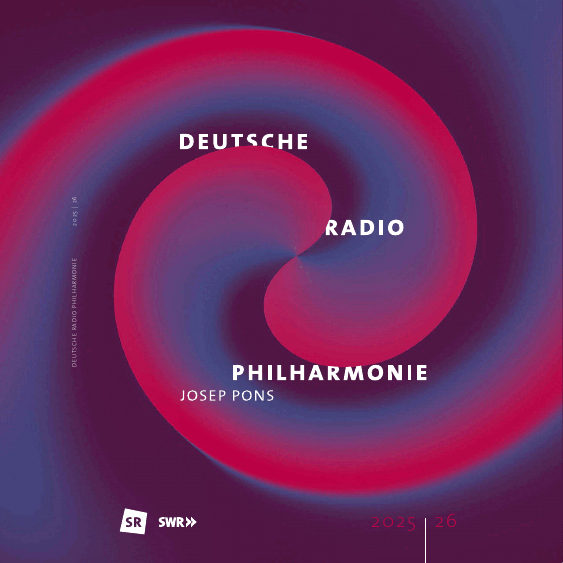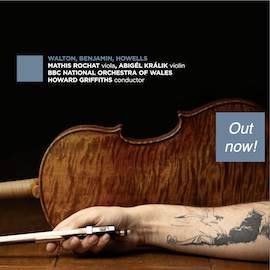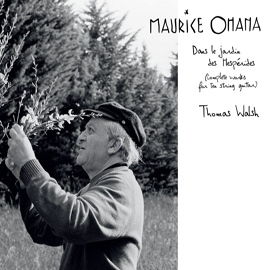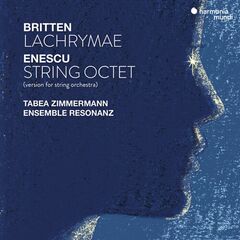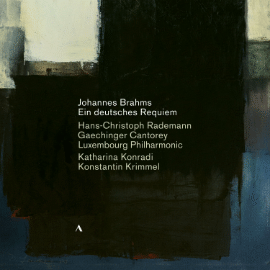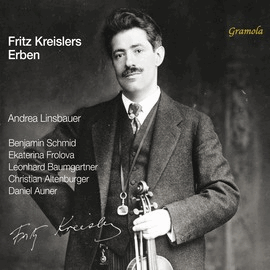Das Ensemble Resonanz ergänzt seine ohnehin starke persönliche Integrität und künstlerisch herausragende Rolle durch enge Verbindungen mit Künstlern, wie hier Tabea Zimmermann. In Brittens Lachrymae tritt Zimmermann solistisch auf, im Enescu-Streichoktett ist sie integriert.
Das Oktett gehört zu den genialen Jugendwerken, während in Lachrymae schon das Ende des Komponisten musikalisch eingewoben ist.
Mit dem Oktett in der Fassung für Streichorchester bespielt das Ensemble Resonanz eine Partitur, die ebenso hochvirtuos wie mitunter symphonisch ausdrucksstark wirkt. Das dicht geflochtene Stück füllt es mit vor Jugendlichkeit strotzender Intensität genauso wie andere Passagen auch solistisch licht verzaubert erklingen. Wie von Enescu vorgesehen, spannt das Ensemble Resonanz den Bogen über alle vier Sätze, um die gewollte Einheit zu erreichen, was überzeugend gelingt.
Benjamin Brittens Lachrymae, Reflektionen auf ein Lied von John Dowland, erfahren ebenso eine von tiefem Verständnis getragene Interpretation. Das gemeinte Lied, Flow my tears, ist nur durch die betrübte Stimmung und kaum durch ein Zitat anwesend. Das Ensemble Resonanz taucht in diese Welt mit fein destillierter Deutung ein, die das kammermusikalisch eng abgestimmte Agieren des Ensembles wiederum luzide erhellt.
Tabea Zimmermann macht aus dem Solopart eine edle Angelegenheit. Sie hat ein natürliches Gespür dafür, Linien und Phrasen zu formen und auszukosten. Das Erstaunliche und dann vielleicht auch genau das nicht Erstaunliche darin ist, dass sie mit charmanten kleinen Nuancen große Wirkung schafft und so ihr in das Werk Hineinlauschen einleuchtend macht.
Ensemble Resonanz complements its already strong personal integrity and artistically outstanding role through close collaborations with artists, such as Tabea Zimmermann. Zimmermann performs as a soloist in Lachrymae and is integrated into the string octet.
The octet is one of the brilliant works of his youth, while in Lachrymae the composer’s end is already woven into the music.
With the Octet in the version for string orchestra, Ensemble Resonanz performs a score that is as highly virtuosic as it is symphonically expressive. The densely woven piece is filled with intensity bursting with youth, just as other passages resonate with light and enchantment even when played solo. As Enescu intended, Ensemble Resonanz spans all four movements to achieve the desired unity, which it does convincingly.
Benjamin Britten’s Lachrymae, reflections on a song by John Dowland, are also given an interpretation borne of deep insight. The song in question, Flow My Tears, is present only through the melancholy mood and barely through a quotation. Ensemble Resonanz delves into this world with a finely distilled interpretation, which in turn lucidly illuminates the ensemble’s closely coordinated chamber music performance.
Tabea Zimmermann makes the solo part a noble affair. She has a natural instinct for shaping and savoring lines and phrases. What is astonishing, and perhaps not astonishing, is that she creates great impact with charming little nuances, thus making her listening to the work illuminating.



